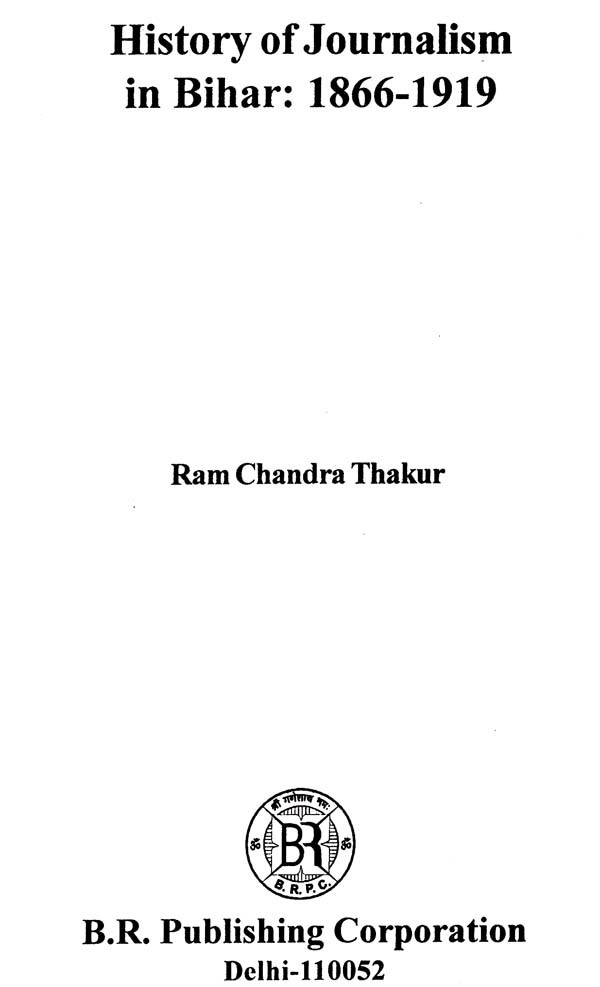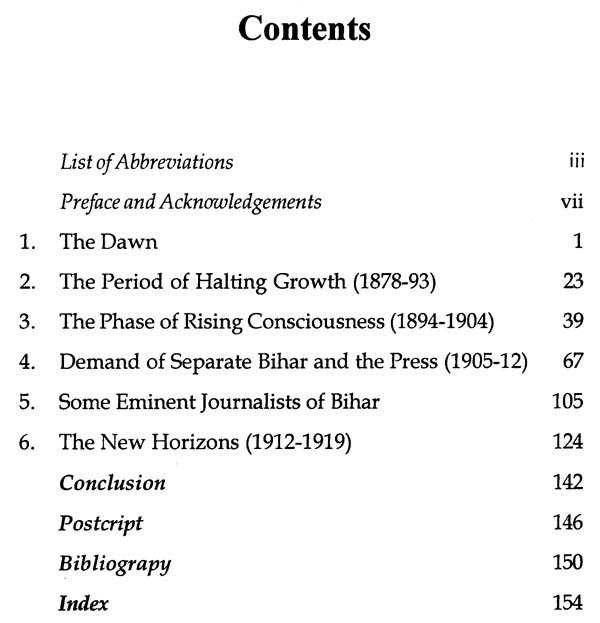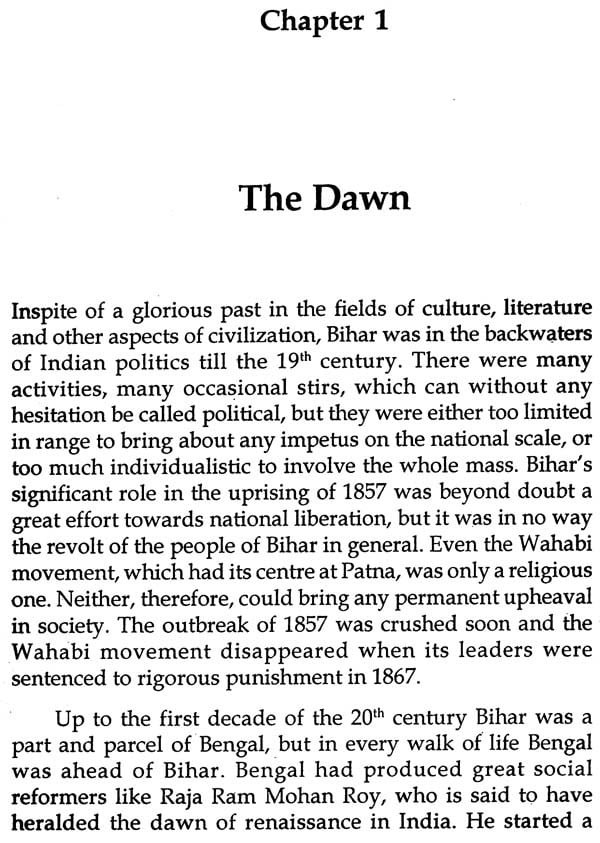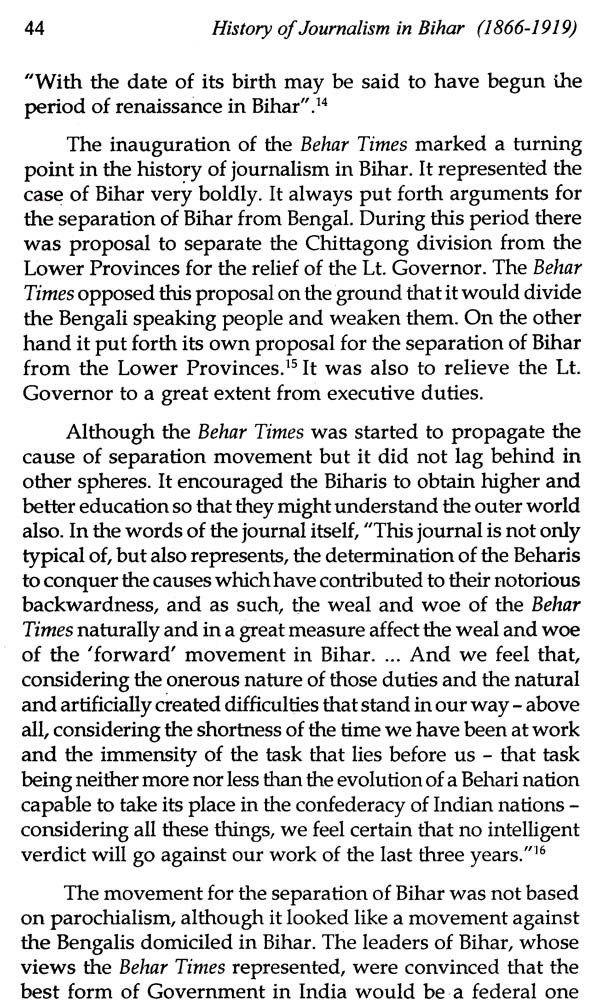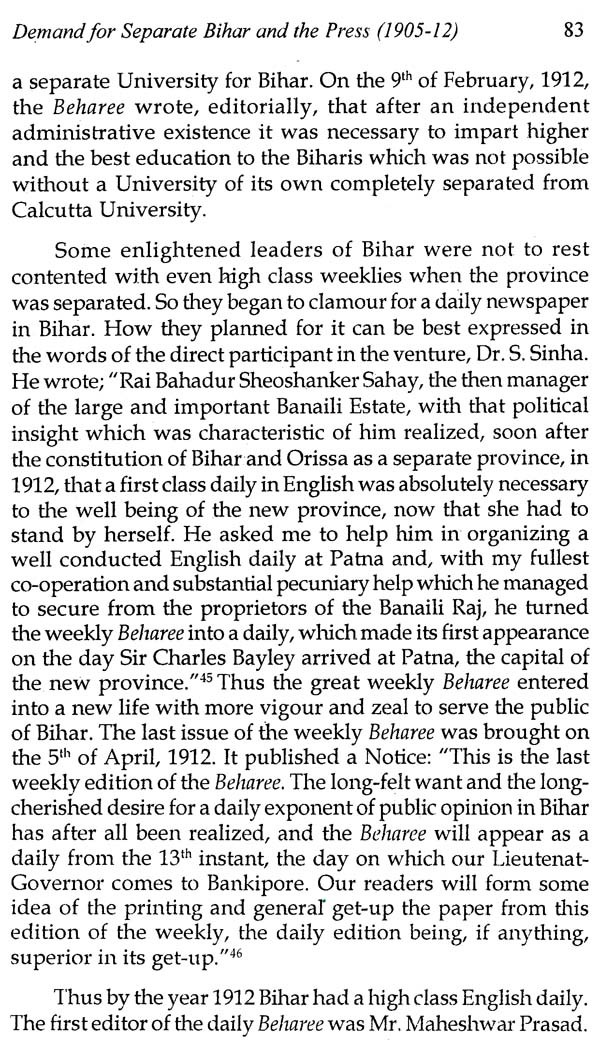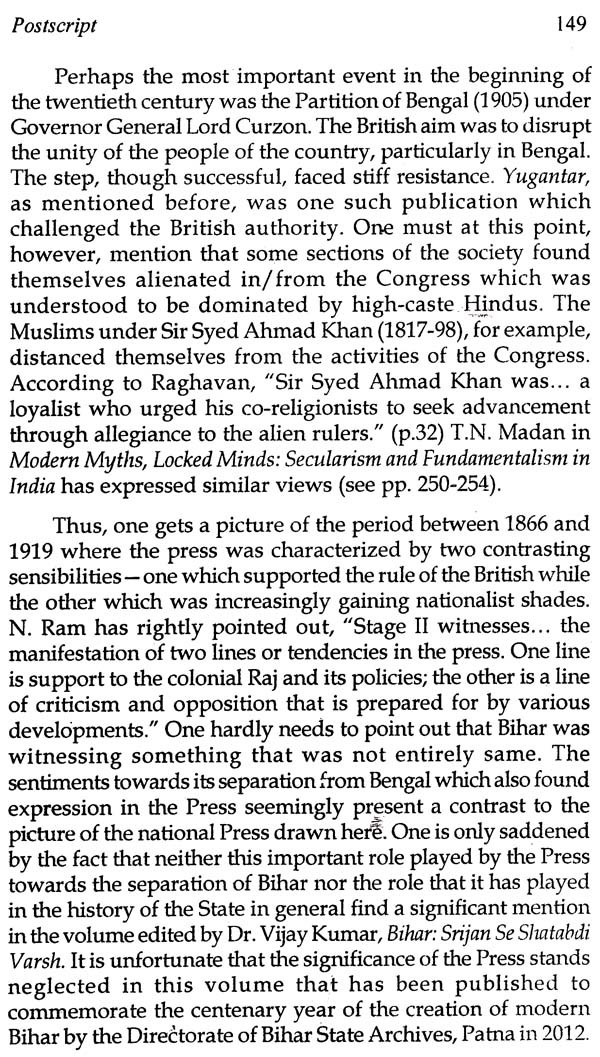About the Book The book deals with the history journalism in Bihar from the stage of its beginning to maturity (1866-1919). It presents the origin and development of Hindi, Urdu and English newspapers and journals published from Bihar during this period. Besides, the role of the emerging middle class in shaping the socio-cultural and political life of Bihar, assertion of its role as manifested in the separation of Bihar from Bengal and subsequent changes in the nature of journalistic output have also been thoroughly dealt with in this work. If the pre-1912 period was dominated by the growing regional consciousness, the post-1912 period witnessed the development of various dimensions and directions not only in the field of journalism of Bihar but also in the struggle for freedom. The author has discussed these and other such aspects in depth in the light of the various traits of caste, class as well as community which influenced the development of journalism in Bihar.
About the Author Dr. Ram Chandra Thakur (b. 1935) completed his studies from the University of Bihar, Muzaffarpur. He taught history for more than twenty five years in the various colleges under the University. He has also guided a research monograph entitled "Bihar Press and Social Awakening" in 1991.
Preface The press is said to be the fourth estate in a modern state. It was only natural that very soon after the English gained their foothold in India, the press also came into existence. To be exact, the first newspaper in India saw the light of the day in 1780 in Calcutta followed by several others in due course. By 1785 and 1789 newspapers came to be published from Madras and Bombay respectively. Even the first vernacular newspaper came into existence by the end of the second decade in the 19th century. But all parts of India, however, did not have newspapers at once and the same time. There were parts of the country which were far away from the condition of life which makes the flourishing of newspapers possible. Bihar, for example, was more or less an appendage of Bengal and its cultural and political life was very much dominated by the Bengails. That is why when the first Bihar newspaper was published in 1866, it was started by a Muslim who was under the influence of new light that was coming over the Muslims under the leader-ship of Sir Syed Ahmad Khan. Papers in other languages followed suit with a view of educating the public in Bihar. The reason for the growth of the newspapers in several languages was that both the rising middle class and the traditional classes in Bihar wanted the Province to compete with other provinces.
**Contents and Sample Pages**
